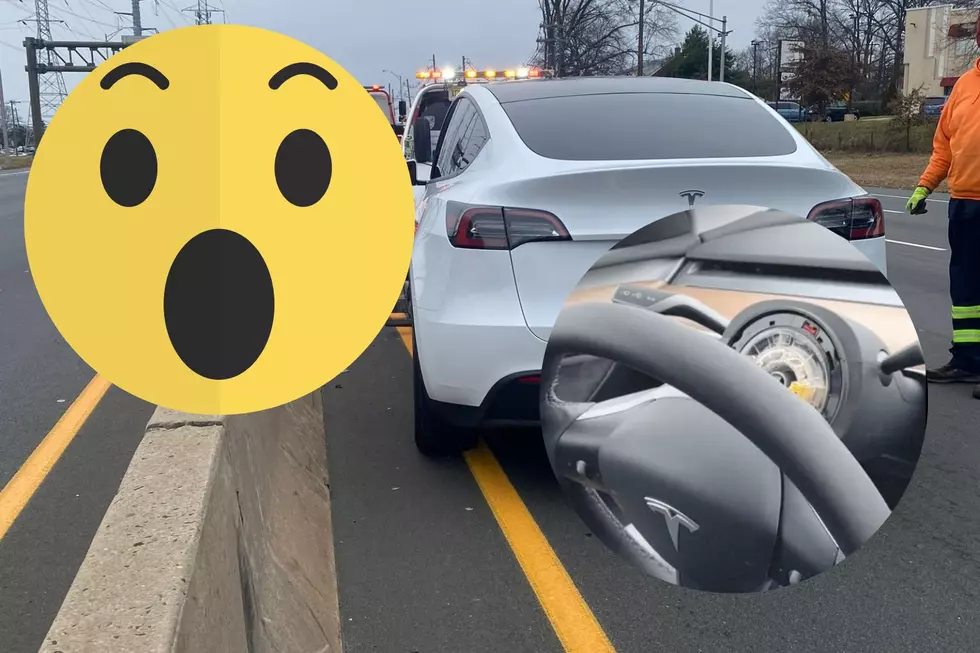
GM is taking aim at Tesla with its own fully-electric car
DETROIT (AP) -- With the introduction of an affordable electric car that can go 200 miles on a single charge, General Motors is setting up a showdown with Tesla to sell an electric vehicle to the masses. It may also upstage a car of its own.
GM on Monday unveiled the Chevrolet Bolt, a $30,000 concept car that likely will go on sale in about two years. The range will make it attractive to many who wouldn't consider a fully electric car for fear of running out of juice. The rollout of the orange compact hatchback eclipsed GM's unveiling of a revamped Chevy Volt Monday at the Detroit auto show.
When the plug-in gas-electric hybrid Volt was introduced as a concept car in 2007, it was touted as an electric vehicle for everyone. It could go 38 miles on battery power, with a gas generator taking over to end worries of being stranded. But its $40,000 price tag hamstrung sales, even with a $7,500 federal tax credit.
Enter the Bolt, a hatchback with a hefty range and SUV-like cargo area and a price that's about the same as the average selling price of a new vehicle in America.
Technically the Bolt is a concept car, but GM plans to start selling a production version sometime in 2017. That sets up a showdown with Silicon Valley's Tesla Motors Inc., which plans to deliver a mass-market, 200-mile electric car for around $35,000 in the same time frame.
But the Bolt could leave the updated and restyled Volt behind, even though GM put a significant effort into increasing the Volt's electric range by one third to 50 miles and adding features that customers want, like five seats instead of four.
When the Bolt, which looks like a cross between a Volkswagen Golf and BMW's electric i3, rolled onto a stage at the Chevy exhibit, CEO Mary Barra said, "For most people, this car can be their daily drive."
Although hatchbacks typically haven't sold well in the U.S., GM says the Bolt's cargo space and high seating will give it extra appeal. Both those features are fueling a boom in crossover SUV sales. "What we really tried to do is take a lot of things that people love about owning a crossover and try and incorporate that," said Stuart Norris, director of advanced design for GM in Korea, where much of the Bolt was designed.
But that functionality is another reason that people may pick the Bolt over the Volt.
Four years ago then-GM CEO Dan Akerson predicted the company would sell 60,000 Volts per year. Instead, GM has sold about 73,000 total since the car went on the market. Its best sales year was 2012 at just over 23,400. Sales last year dropped 19 percent to just under 19,000.
Neither electric car is likely to get on car buyers' radar in the short run with gasoline running around $2.15 per gallon, said Jeff Schuster, executive vice president of forecasting for LMC Automotive, an industry consulting firm.
"Even the 200-mile thing, which is a remarkable achievement and something that certainly everyone has been chasing, I think it risks getting lost in the shuffle where gas prices are right now," he said.
Oil prices - and therefore gas prices - are volatile, so things could change by the time the Bolt hits the market. Schuster says if gas prices stay low, neither the Bolt nor the Volt will sell well. And that will buy other automakers time to catch up with their own 200-mile electrics. Plus, cheap gas means it will take longer for owners to recoup the premium paid for an electric car with savings from not buying gasoline.
GM has dialed back sales expectations for Volt 2.0, and executives are confident there's a market for it when it arrives in showrooms in the second half of next year. They're targeting the Volt not so much to those who want to save on gas but more toward those who bought the first generation - tech-saavy individuals who want to drive on electricity without worrying about running out of juice.
And gas prices inevitably will swing to the Volt's favor, says Steve Majoros, marketing director for Chevrolet cars. "I don't know where we're going to be six months from now," he said. "I don't think that gas price is the primary determining factor for a car like this."
The new Volt is sleeker and faster than the old one. It's 200 pounds lighter and the generator gets the equivalent of 41 miles per gallon on the highway rather than 38. Engineers also made it more aerodynamic, with grille shutters that close when air isn't needed and a spoiler built into the tail lights and rear hatch. It's zero-to-30 mph time is 2.6 seconds, 20 percent better than the old one. The car also comes with optional heated rear seats and the latest in active cruise control that can keep the car a safe distance from those in front of it.
The middle seat in the back isn't exactly optimal. A rider has to straddle a cup holder, and there's little headroom beneath the sloping roof.
Akerson at one point implored engineers to take $10,000 in cost out of the next generation. Barra won't say whether that was accomplished, although she said progress was made. GM also won't say how much it spent to develop the car or how much the new one will cost.
More From New Jersey 101.5 FM









